Hard-boiled Eggs are a staple during the Spring when it’s prime Easter Egg Dying time! Whether you are getting your color on or just want the perfect hard-boiled eggs to eat in salads or alone, I am giving you the rundown on Instant Pot Hard Boiled Eggs and which is the best cook method for the Instant Pot!
My friend posted a video about using her Instant Pot to make her hard boiled eggs for her family to dye for Easter this year. It was shared in the Instant Pot Facebook Group and there was quite a heated comment session going on regarding the method and the best cook time for Instant Pot Hard Boiled Eggs.
The conversation held as much passion as political debates! It really peaked my curiosity!
It dawned on me that “perfect” is quite arbitrary! Perfect to me may not be perfect for you! We all have the perfect way we like them, probably the exact way our moms or grandma’s made them for us growing up.
What if you don’t know what your perfect hard boiled egg is? I am going to try to help!
I broke out my former lab skills (I actually have a degree in Chemical Engineering) and did a little experiment to see how the eggs cooked at all the different time variables so that you yourself can decide which method to use to get yOUR perfect Instant Pot Hard Boiled Eggs.
Don’t have an instant Pot? You can get one here and also see all the differences in the models and my favorite accessories. (including one for Hard Boiled Eggs)
This post took FOREVER to make because I wanted to maintain the same constants for each variable.
Here is what I started with:
- I used Grade A Large Eggs from my Grocery Store (grocery store brand) all from the same carton.
- I used a Cold Egg to start each trial run
- I used a fresh cup of tap water with each trial run (not hot, not cold, just straight from the tap)
Here are the different methods I used based on comments from the thread:
- 5-5-5 method. Cook 5 minutes, 5 minutes natural pressure release, 5 minutes in an ice bath
- 7-7-7 method. Cook 7 minutes, 7 minutes natural pressure release, 7 minutes in an ice bath
- 10-5-5 method. Cook 10 minutes, 5 minutes natural pressure release, 5 minutes in an ice bath
- 10-0-5. Cook 10 minutes, 0 minutes natural pressure release (quick released), 5 minutes in an ice bath
- 10 minute method. Cook 10 minutes. Quick Release right away and no ice bath.
I was noting these characteristics: If cracks were present after pressure cooking, the ease to peel the shell, state of yolk and state of whites of eggs.
Findings on Instant Pot Hard Boiled Eggs:
All methods yielded eggs that were not cracked or harmed in any way.
All methods yielded EASY to peel shells. After cracking they fell right off with minimal effort!
| Trial | Manual Cook Time | Natural Pressure Release Time | Ice Bath Time | Easy to Peel? | Cracked? | White | Yolk |
| 1 | 5 minutes | 5 minutes | 5 minutes | Yes | No | Cooked | partially raw center |
| 2 | 7 minutes | 7 minutes | 7 minutes | Yes | No | Cooked | partially raw center |
| 3 | 10 minutes | 5 minutes | 5 minutes | Yes | No | Cooked | cooked through |
| 4 | 10 minutes | No NPR – Quick Released | 5 minutes | Yes | No | Cooked | mostly cooked through |
| 5 | 10 minutes | No NPR – Quick Released | No Ice Bath | Yes | No | Cooked | partially raw center |
#1. 5-5-5 method
Yolk was cooked for the most part but did still yield a slightly soft boiled section in the center of the yolk. White was great texture not rubbery at all.
#2. 7-7-7 method
Similar results to 5-5-5. Visually almost identical. Whites texture same as well.
#3. 10-5-5 method
Yolk was completely hard-boiled. No green ring at all around the yolk. Whites were great texture not rubbery at all. Yolks were deliciously creamy.
#4. 10-0-5 method
Yolks and whites were closest to 10-5-5 method, however yolk was not as creamy it was a bit harder/rubbery. Definitely not as creamy and the very very center was a bit soft boiled still. Not terrible though.
#5. 10-0-0 method
Yolks had a small amount of soft boil left to them. More than trial #4 but less than trials #1 and #2 Whites were good texture not rubbery.
So my conclusion is that all methods produce same results in respect to shells, ease of peel and whites and also noted lack of green ring that is common in stovetop method. Differences are only found in yolks and your preference of how you like your eggs will determine which method is best for you!!
I understand that elevation and maybe even climate may be variables here but this is a good starting point for YOU to find your best cook method depending on how you like your hard-boiled eggs!
Me? I am going with the 10-5-5 method for my Easter Egg Dying and future Instant Pot Hard Boiled Eggs!
I was curious then if my favorite method would hold up to a whole dozen. It did! Perfectly! I figured it would because pressure cooking really is about the size of the item, not the quantity. The quantity may just alter the time it takes for your pot to reach pressure. (P.S. I also tried it with an 18 count with perfect results. That is as high of a quantity as I have tried!)
No Instant Pot? No problem. I can tell you how to get the same results as the 10-5-5 method using traditional boiling methods here in my How to Get the Perfect Hard Boiled Egg post!
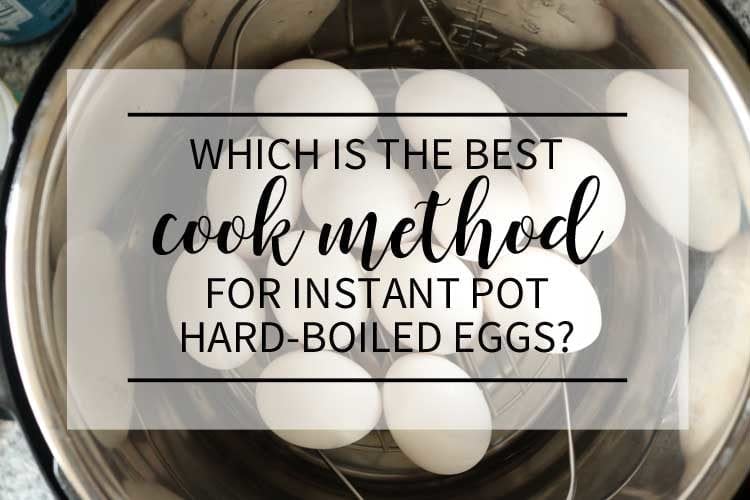
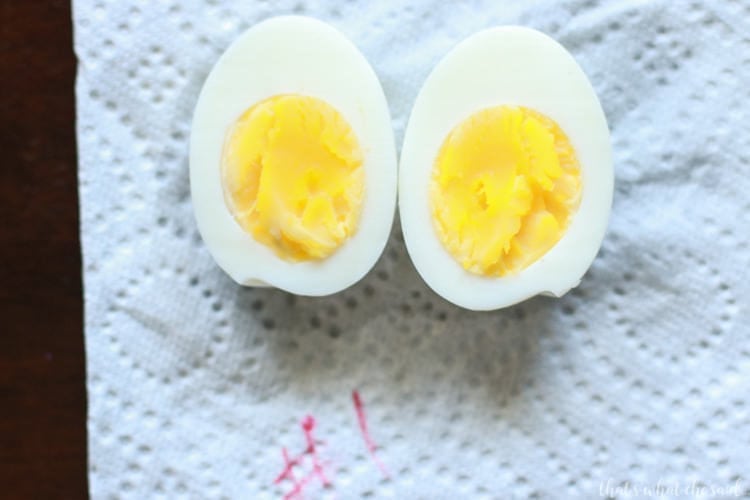
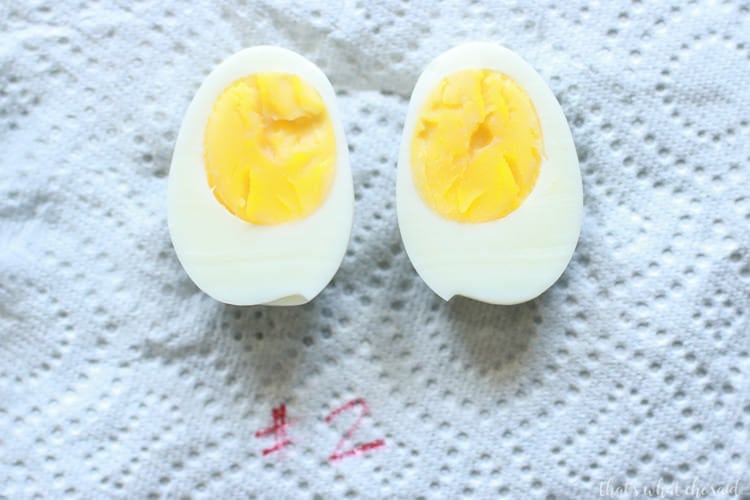
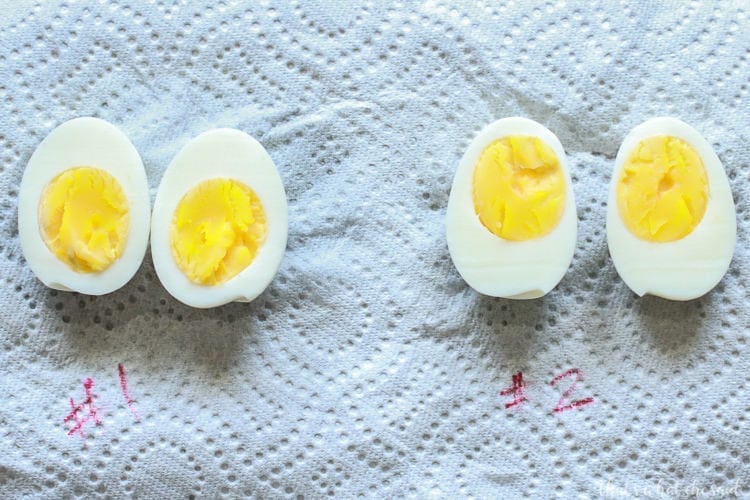
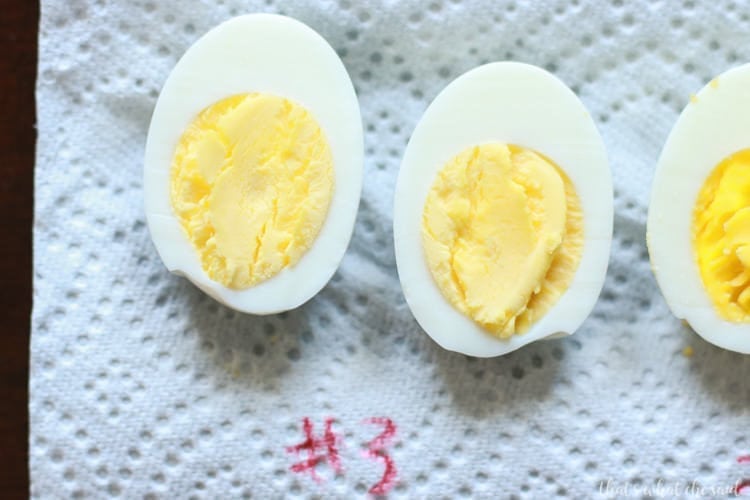
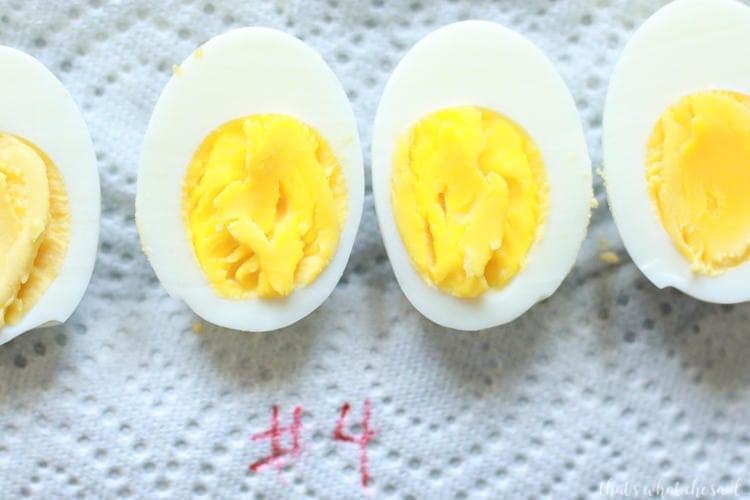
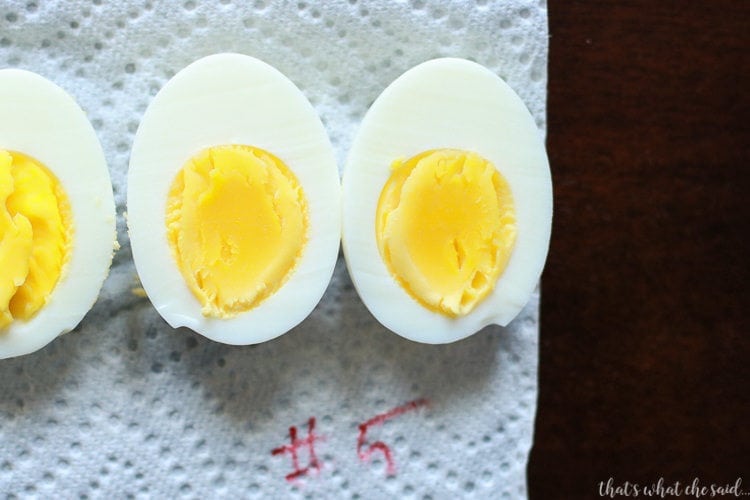
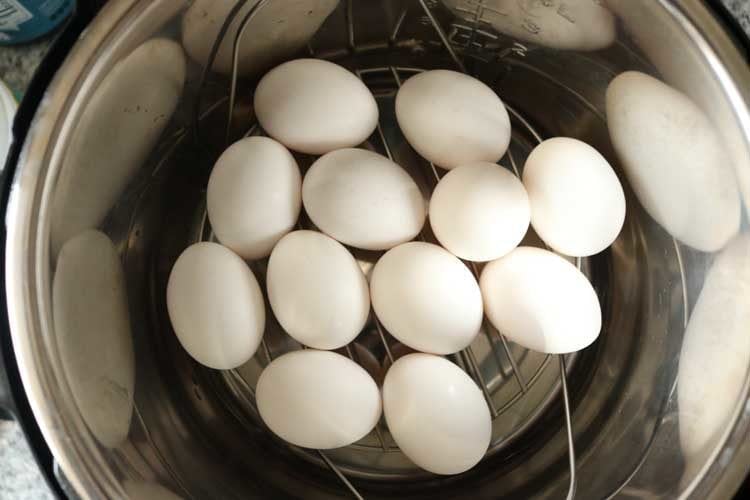
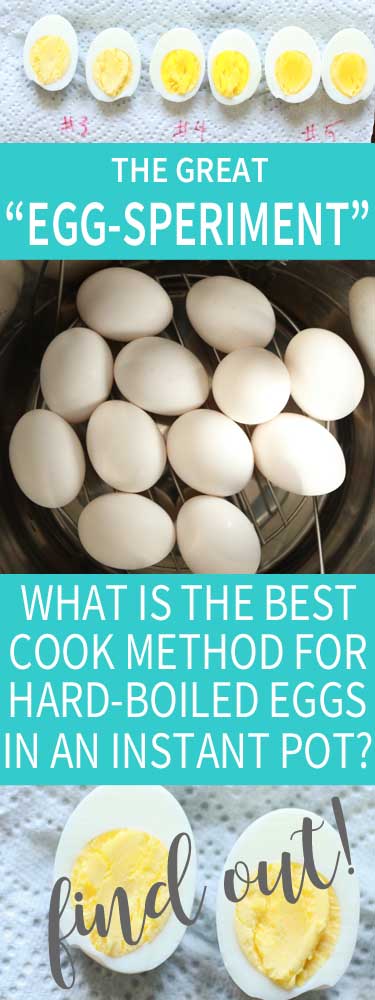









Comments & Reviews
Carol Pyles says
Curious as to what size instant pot you used for this? I used to have a different brand electric pressure cooker that was 6 qt and could always get the results you got. Now I upgraded and got myself an 8 qt instant pot and every time, no matter the cooking time used I get that green ring around my yolk and my egg whites always have a tan look to them. I am finding more and more the 8 qt seems to run way hotter than the smaller units.
Cheryl Spangenberg says
Carol I have the 6 quart. I have never used an 8 quart! The green rings are definitely a sign of the eggs being cooked too long or at too high of a pressure. Let me as some of my friends who have had both and see if they have any insights for you! Maybe try 1 egg for the same time on low pressure? Now I need an 8 quart to run this experiment!